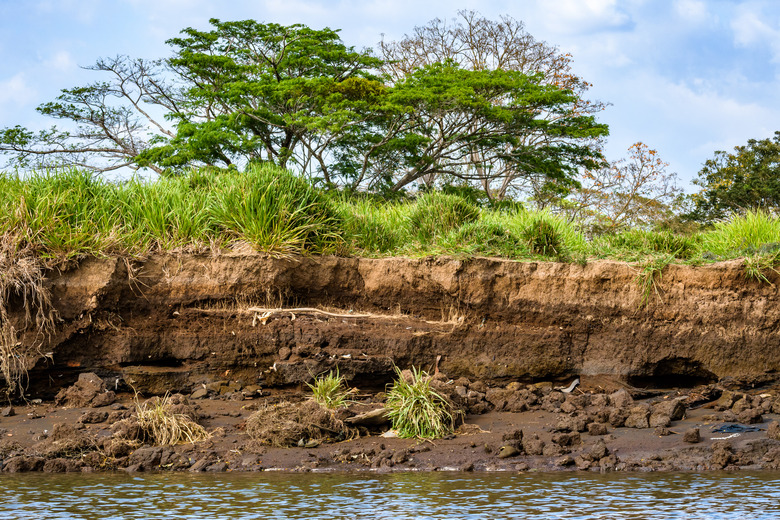Erosion Effects On Ecosystem
Erosion is a serious problem in the United States and around the world. According to the Federal Emergency Management Agency (FEMA), U.S. coastlines lose 1 to 4 feet each year due to erosion. The effects have environmental as well as economic costs. For ecosystems, erosion translates into habitat loss as coastal wetlands deteriorate. The plants and wildlife that depend on these ecosystems are negatively impacted by the effects of erosion. Economically, loss of these ecosystems leaves coastal areas more vulnerable to damages from tropical storms and storm surges.
Causes
Causes
One of the primary causes of erosion stems from urban development. Habitat replacement often results in an increase in the amount of impervious surfaces such as roads, parking lots and sidewalks. Normally, vegetation would slow surface water flow. Impervious surfaces increase water flow. Water can travel faster and in greater quantities. This action causes water to overflow stream banks, thus triggering erosion in vulnerable parts of the ecosystem.
Effects
Effects
Erosion removes the topsoil from the ground, often removing the seed bank that exists within soils. Further, this can introduce toxins from pesticide and fertilizer applications into waterways. Erosion also carries the possibility of introducing other contaminants into water resources. Heavy metals and toxins lie dormant in wetland soils as part of the sediment. Erosion disturbs these layers and releases these pollutants into surface water. The effects are measured based on the toxicity of the chemicals and compounds that enter the water.
Significance
Significance
Sediment has other negative effects on aquatic resources. Excessive sediment negatively impacts the streams and lakes by impeding filter feeders. These aquatic organisms rely on clear water in order to feed. Impacts on these life forms can potentially affect all aquatic life in the ecosystem by removing the bottom level compounds of the food chain.
Warning
Warning
As erosion continues, so too does the risk for flooding. Without proper habitat and with increases in impervious surfaces, more areas become vulnerable to flood risk. According to Flood Smart, any area—regardless of location—is at risk. Erosion compounds the problem as well as the costs of flooding.
Prevention/Solution
Prevention/Solution
The best solution for preventing soil erosion problems is with habitat maintenance and restoration. For example, planting buffer strips along stream banks and other water bodies helps to hold the shoreline soils intact, thus preventing erosion. Wetland restoration protects the ecosystems most vulnerable to soil erosion, such as floodplains, by absorbing and slowing excess water flowing over land surfaces.
Cite This Article
MLA
Rogers, Chris Dinesen. "Erosion Effects On Ecosystem" sciencing.com, https://www.sciencing.com/about-6085011-erosion-effects-ecosystem/. 22 November 2019.
APA
Rogers, Chris Dinesen. (2019, November 22). Erosion Effects On Ecosystem. sciencing.com. Retrieved from https://www.sciencing.com/about-6085011-erosion-effects-ecosystem/
Chicago
Rogers, Chris Dinesen. Erosion Effects On Ecosystem last modified August 30, 2022. https://www.sciencing.com/about-6085011-erosion-effects-ecosystem/
